The LG G4 Review
by Joshua Ho on July 30, 2015 10:00 AM EST- Posted in
- Smartphones
- Qualcomm
- LG
- Mobile
- Snapdragon 808
- LG G4
Software: LG UX 4.0
Software is ultimately one of the most important aspects of a smartphone. In the case of iOS and most mobile OSes, the experience is essentially fixed for everyone. However, with Android OEMs often create their own frameworks within the OS to enable various features that are missing from the base OS. OEMs also tend to change the look and feel of many core user applications and many key Android UI elements. As a result, it is often necessary to evaluate UI on a per-device basis rather than with a single catch-all OS review due to the potential for some enormous design variance.
When it comes to LG’s UX 4.0, LG definitely goes with an experience that is extensively customized that differentiates itself from stock Android. Almost every stock application has been replaced by LG’s take on Android. The color scheme of the UI is somewhat inconsistent, as aspects of the UI like the weather clock and quick settings toggles tend to be strongly saturated while other aspects of the UI like the notification shade and most of the iconography tends to be rather muted in comparison due to the use of pastel colors. I’m actually not sure whether this is the result of the high-gamut display or deliberate color choices, but the use of neon colors in general definitely draws a lot of attention when it’s used.
Outside of this though, I honestly don't have too much to object to on this front. LG still isn’t really following all of Material Design, although I suspect there’s at least some debate over whether the level of focus on animation in Lollipop has become distracting. At any rate, this isn’t a huge deal but I suspect it would give a better sense of flow and continuity within the UI if LG implemented more animations to fit Material Design, such as sliding in a “card” when adding a calendar event rather than just having the new screen appear from thin air.
If you look past the animation style, LG has done a surprisingly good job with the UI. Most applications mostly look the part of a modern Material Design. Most applications like the calendar, tasks, and notes (QMemo+) place the action overflow button on the far right of the top navigation bar, then a floating action button (FAB) with appropriate drop shadows on the bottom right. Sidebar menus are marked with the standard icon that we’re all familiar with on Android and open with a swipe in correctly instead of requiring a precise tap of the icon like TouchWiz on the Galaxy S6. Meanwhile there are some applications that behave strangely by default like the settings app, but changing the view to list view instead of tab view resolves these problems for the most part. The messaging experience is also surprisingly awesome, as you get popups to quickly reply to SMS/MMS when you aren't in the messaging app.
Ultimately LG really deserves some credit for implementing smart functionality in an intuitive manner throughout their skin, and these are things that arguably couldn't be accomplished within the constraints of a "pure AOSP" build.
Of course, there are some other issues with design consistency. The lock screen is one notable departure from the rest of the mostly-MD UI, as the default swipe lock screen has some really ostentatious animation no matter what you set. Admittedly, this is a pretty minor issue and goes away completely if you set any sort of security with no timeout, so I’m not too hung up on this. There’s also no fingerprint authentication option here, which is a big disappointing as I’ve always felt that a combined fingerprint scanner and power button on the G4 would’ve been a great user experience given the rear-mounted buttons.
Iconography is also a big inconsistent even if it’s all relatively tasteful, with some icons using drop shadows and pastel colors with a square background, while others have a single fixed color, no shadowing, and a round background. The final aspect where I saw some noticeable design inconsistency is the power menu, which looks like it came from MIUI or iOS rather than Android due to the use of a background Gaussian blur with rounded, white icons that lack depth.
Outside of these basic questions of design, LG has also added some surprisingly useful functionality with working Dual Window functionality. LG has implemented a UI that requires manually selecting both applications that will be used in Dual Window mode, and the list of applications that work with this mode is noticeably lower than what Samsung supports with MultiWindow so the functionality and user experience isn’t as good here. I still think native windowed application support is a must for Android on tablets, but this is something that only Google can do. There are also QSlide apps which are essentially floating window applications, but for some reason activating QSlide within a supported application is an option buried within the action overflow button instead of some sort of gesture or immediate action button. Key applications for a good out of the box experience are also done acceptably well.
Going beyond design consistency concerns, performance is solid on the LG G4. For the most part, navigation through the UI is fluent and basically free of lag. However, compared to the Galaxy S6 I noticed more dropped frames in third party applications when dealing with CPU-heavy listviews like the Play Store. I suspect that this is mostly due to differences in governor behavior and software optimization rather than throttling though, as die temperatures never approach anything notable when just going through light applications like the Play Store or scrolling through a webpage.
Overall, LG’s software experience is decent, but there is still progress to be made. There is some need for more cohesive design and overall polish, but otherwise I doubt that anyone will really have major problems with LG’s UI. I didn’t notice any real usability issues in general, and I suspect neither will the average user. I noticed an option in the developer settings for enabling and disabling OEM bootloader unlock, so enthusiasts should be able to unlock the bootloader on at least a few variants although with US carriers it’s always hard to gauge whether this is possible due to their requirements. The real concern isn’t so much that the experience is poor, but that there are some notable feature omissions like a fingerprint scanner and Google Now activation regardless of screen state. If you don’t find these omissions to be glaring, the G4’s software experience should be acceptable.


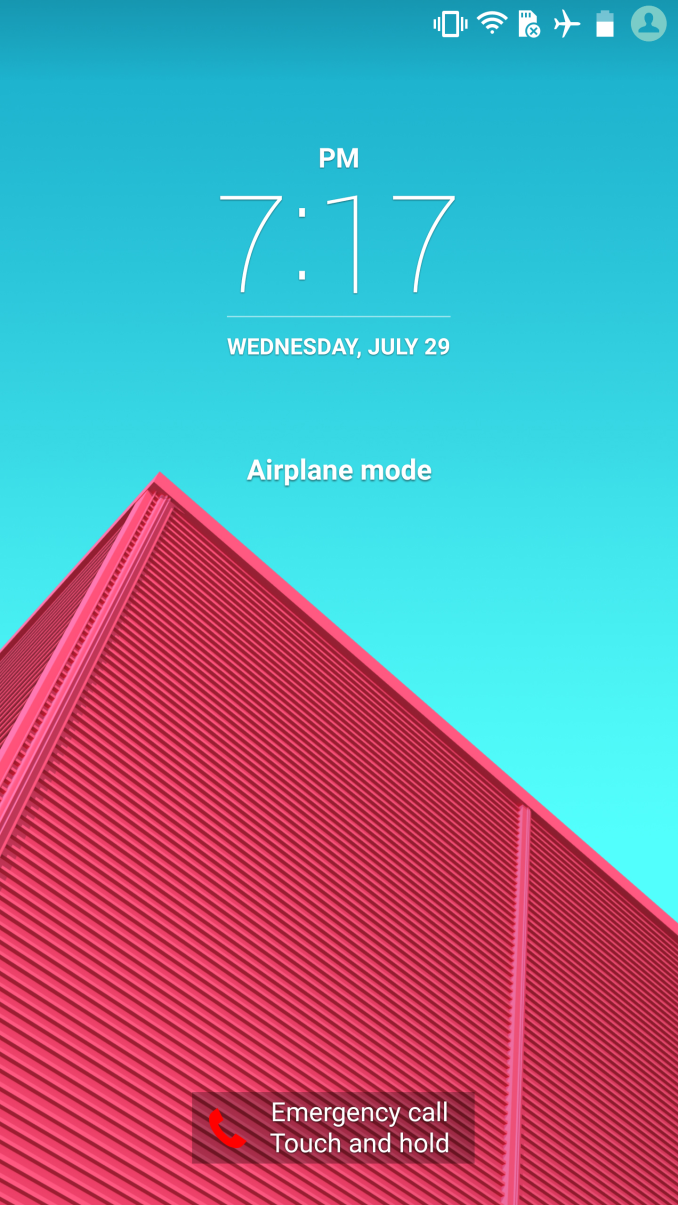
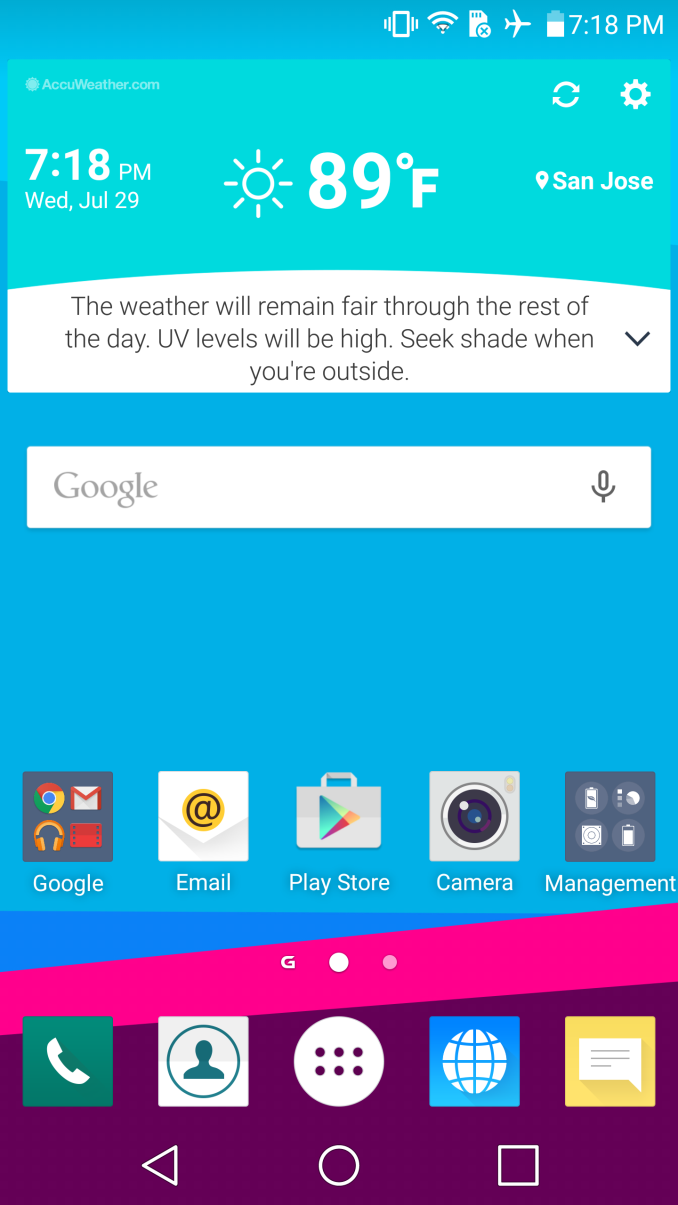
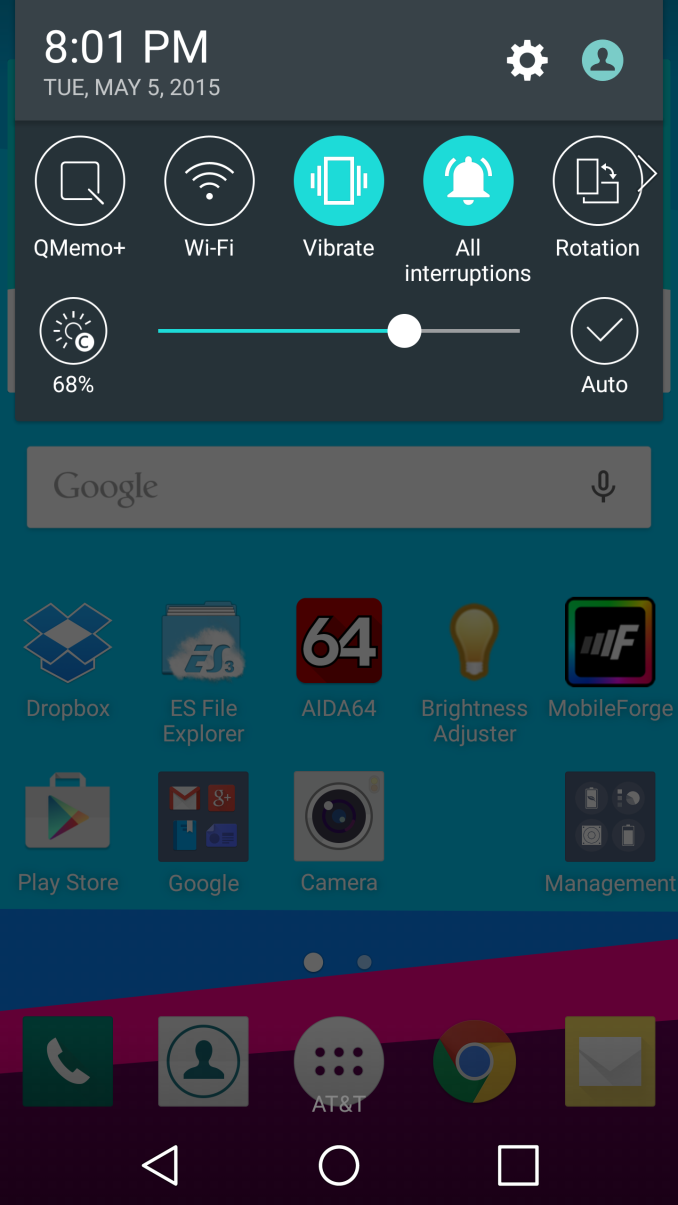
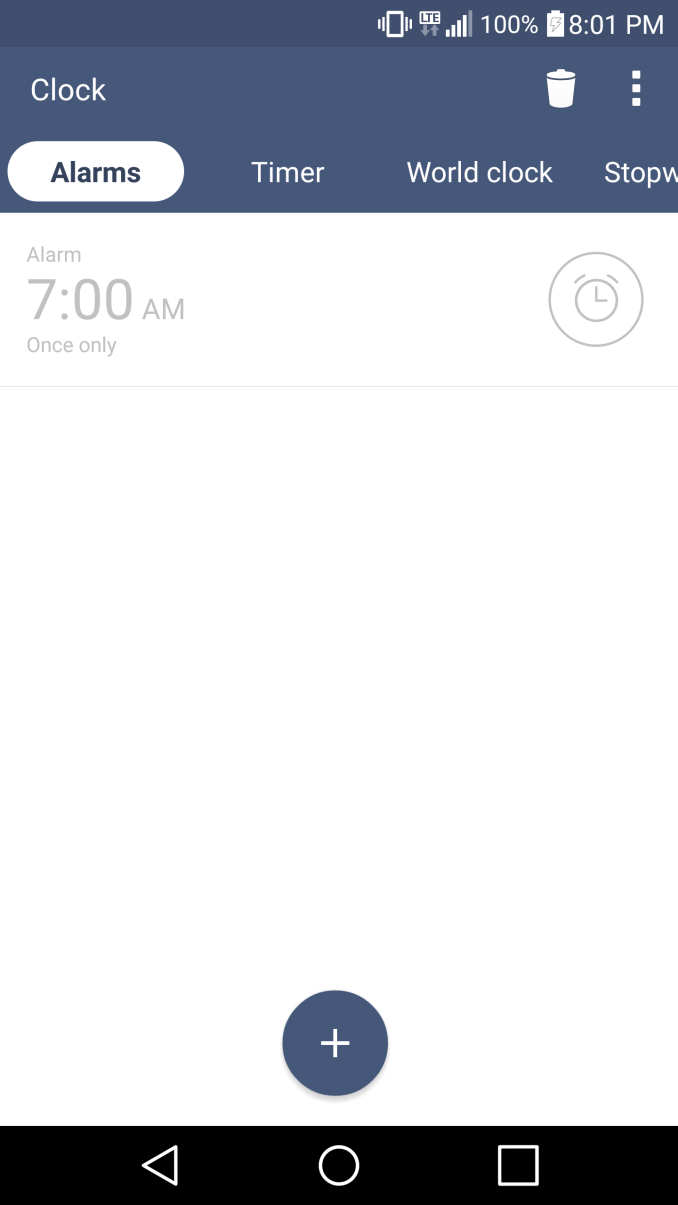
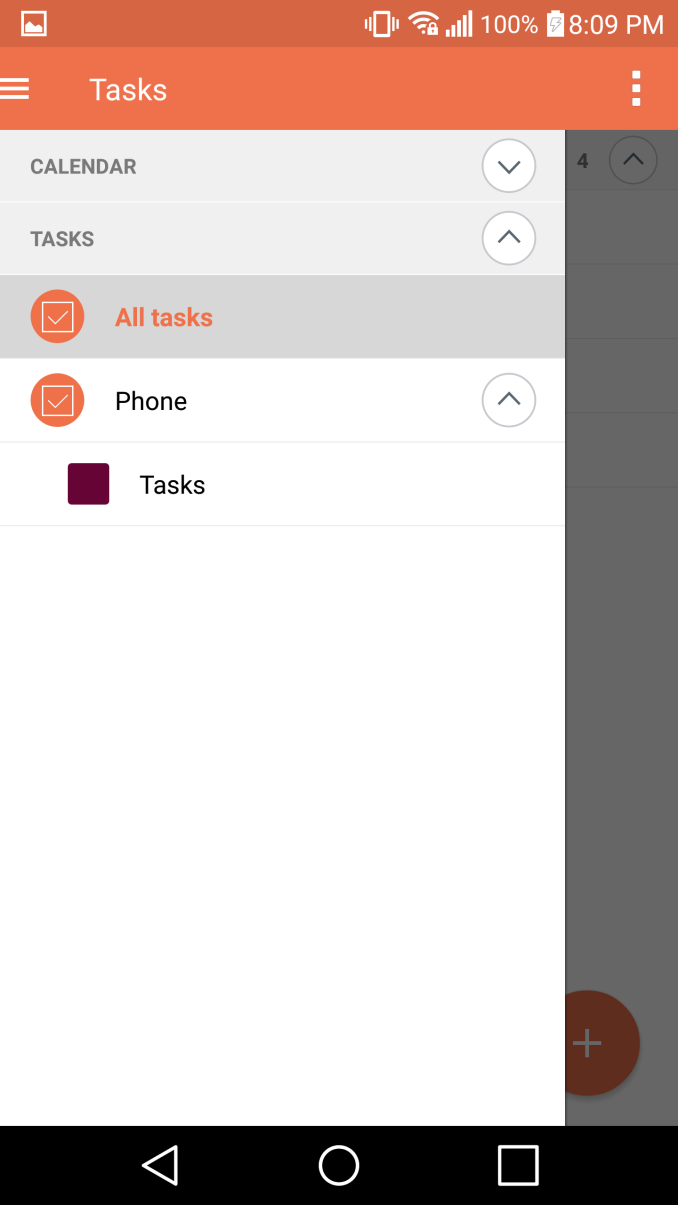
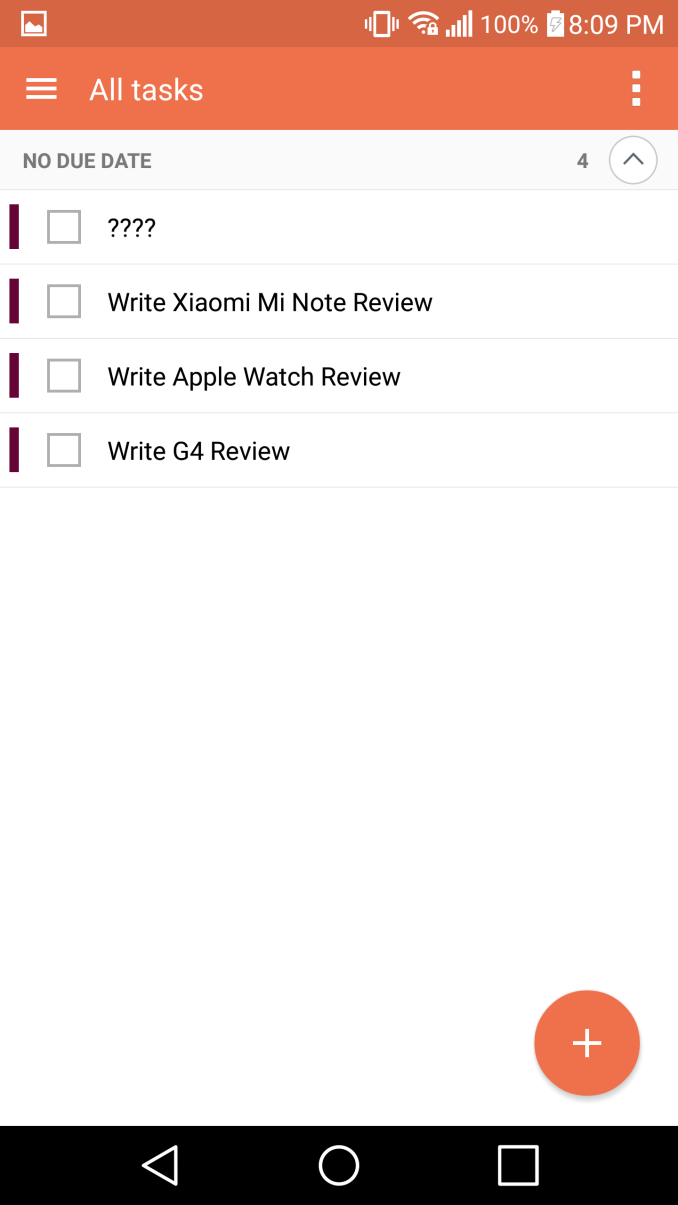
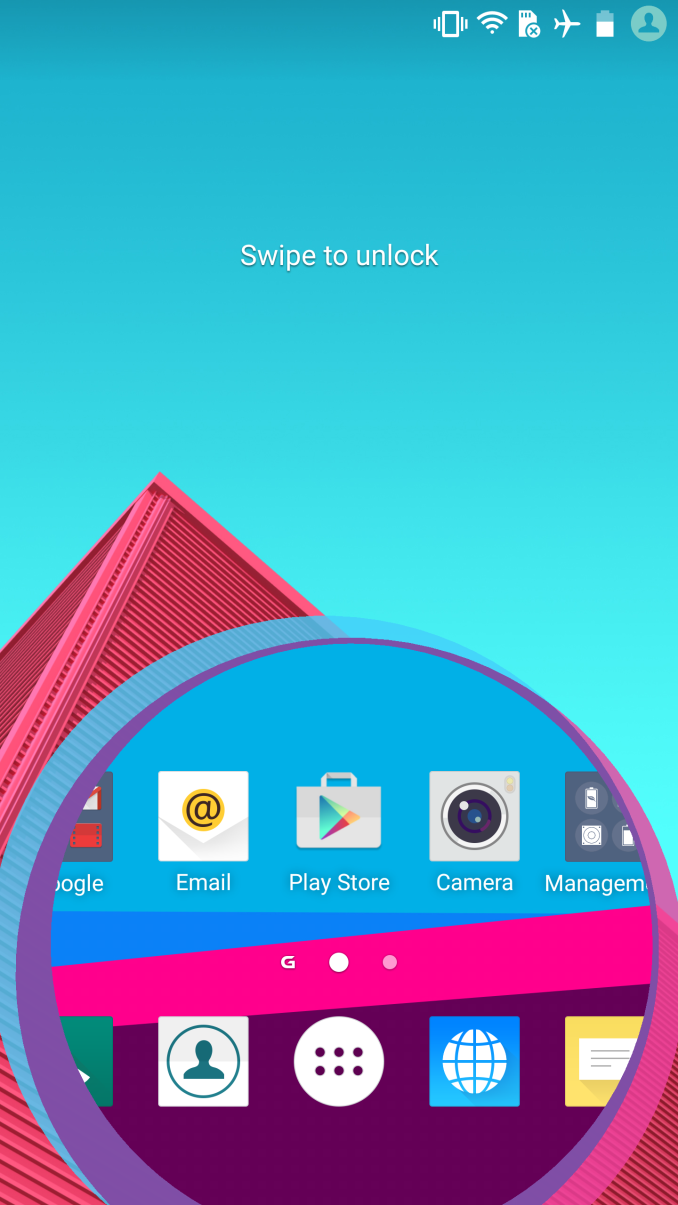
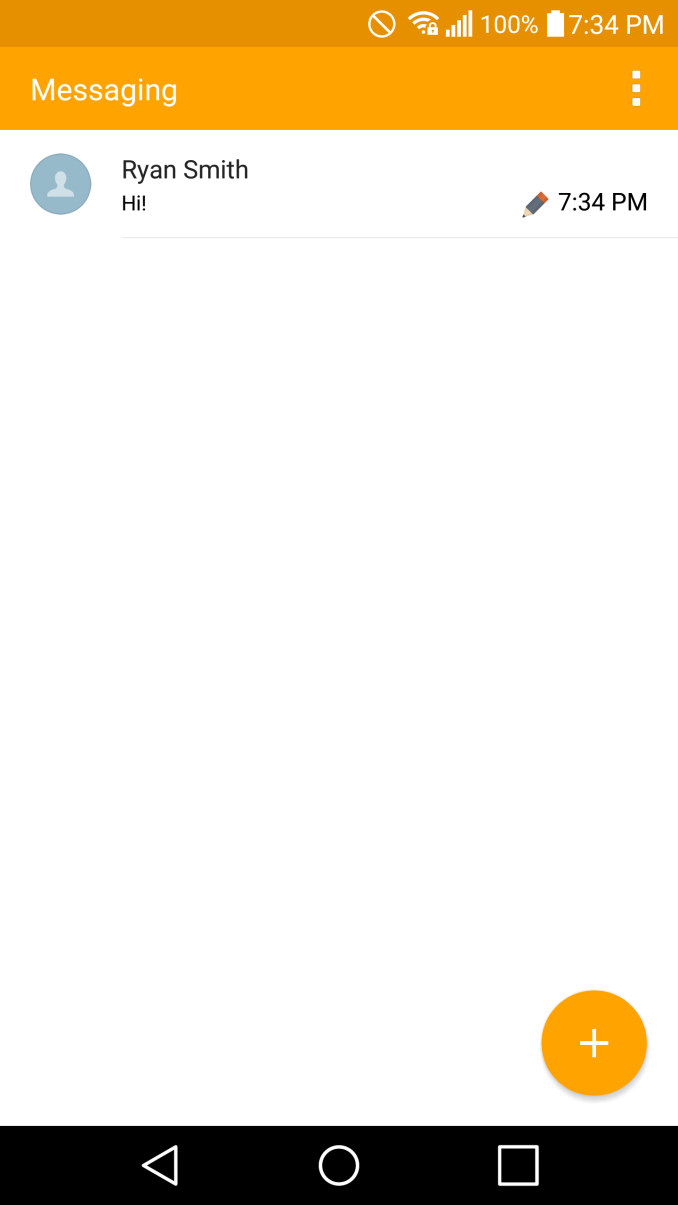
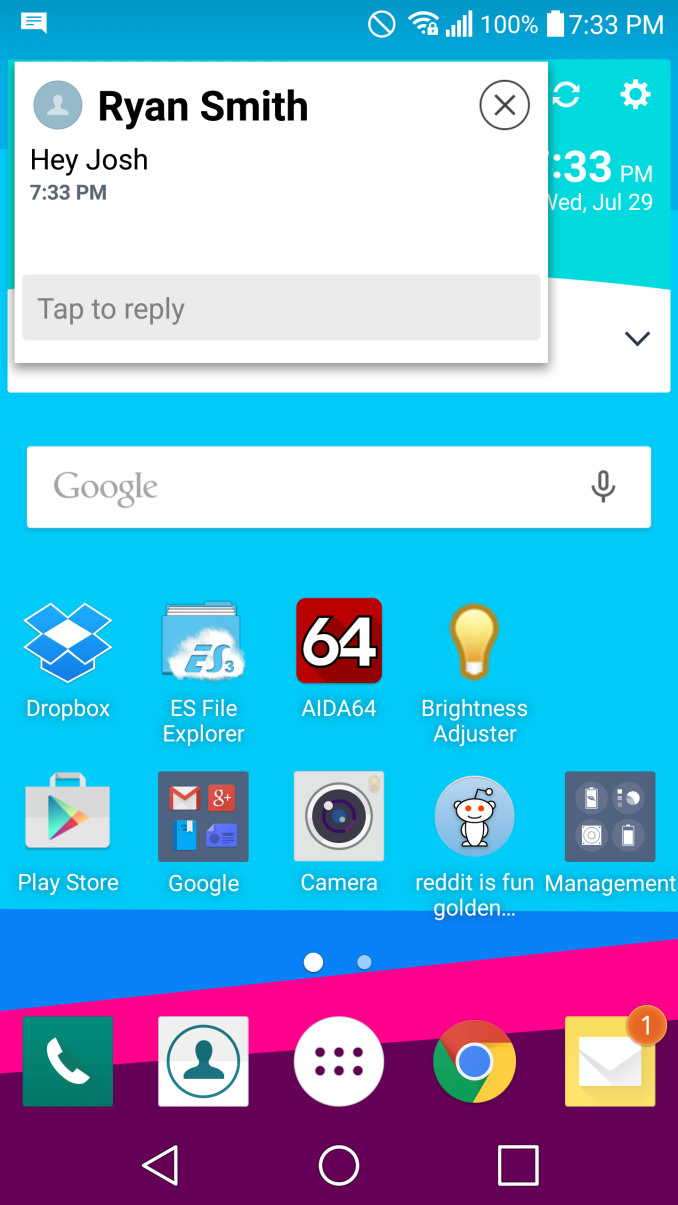
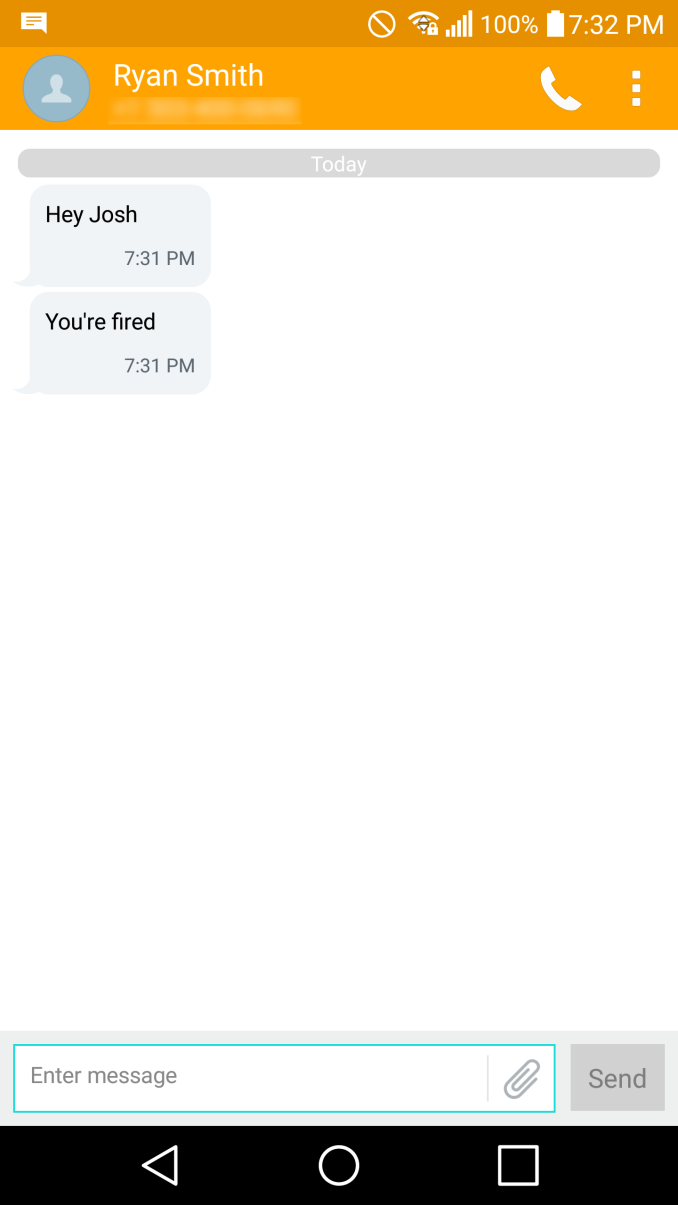
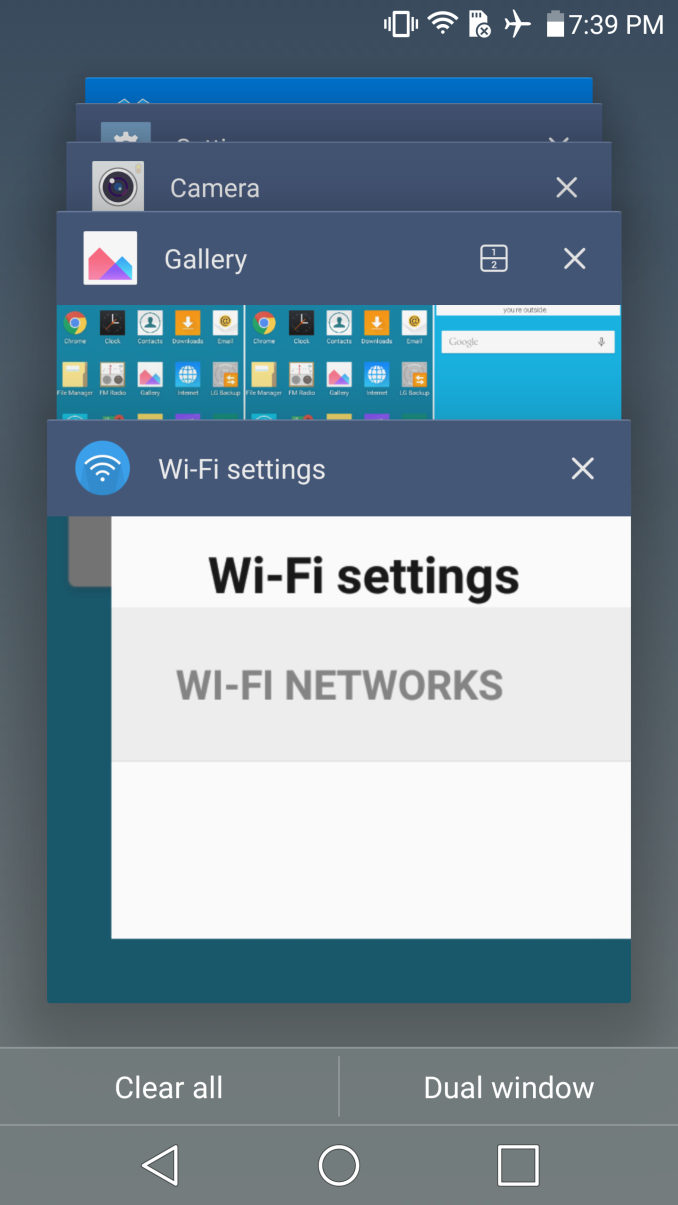
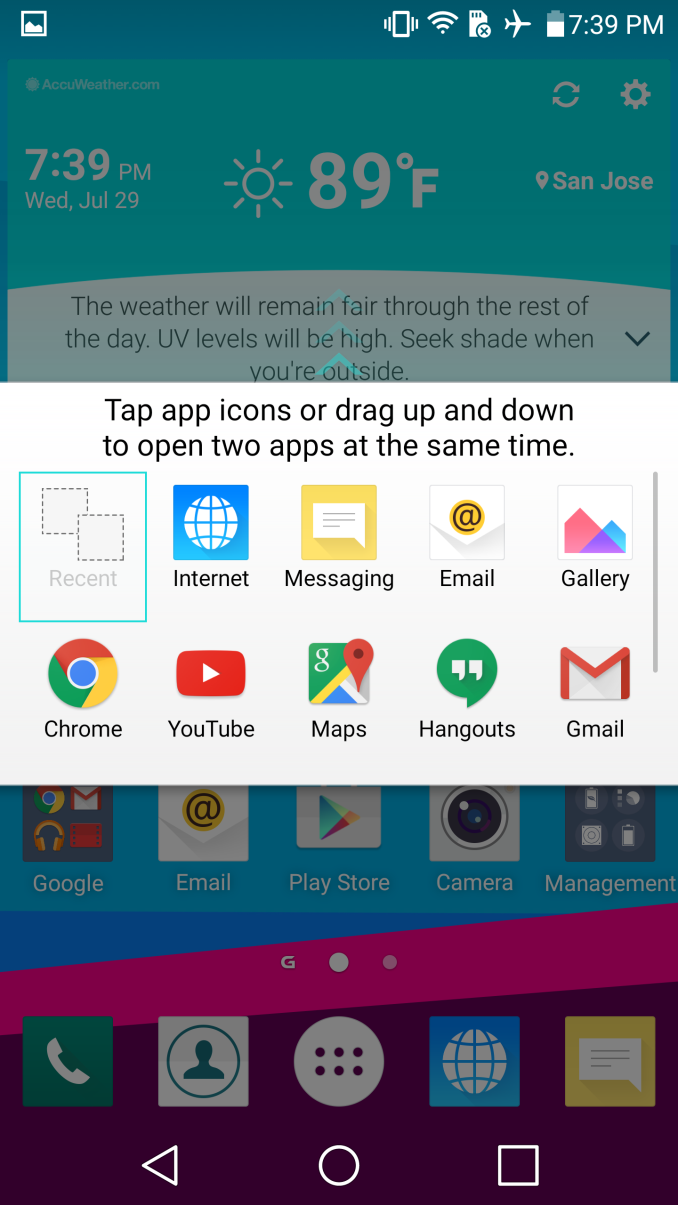
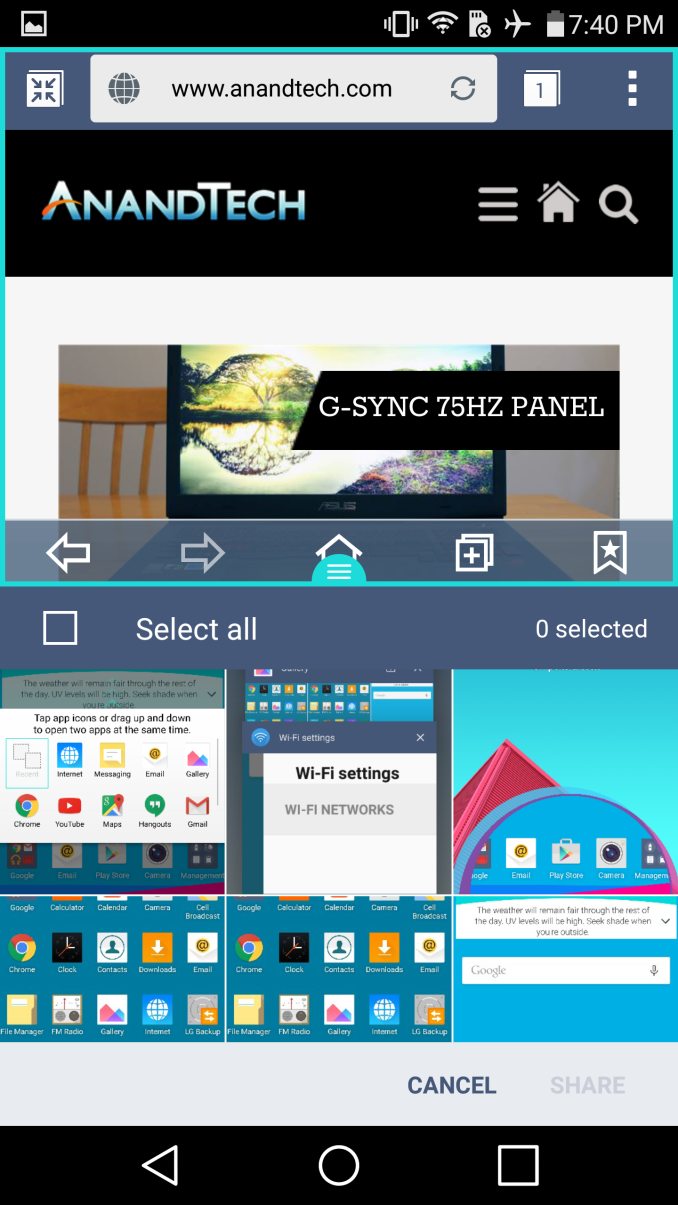
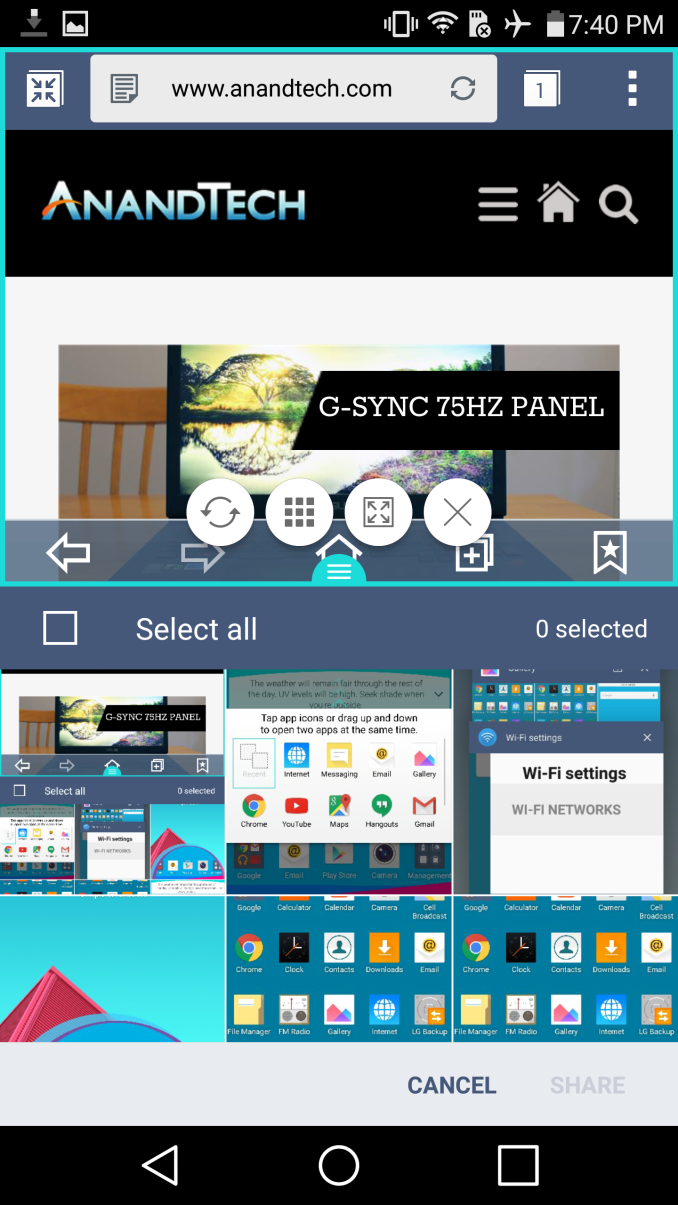
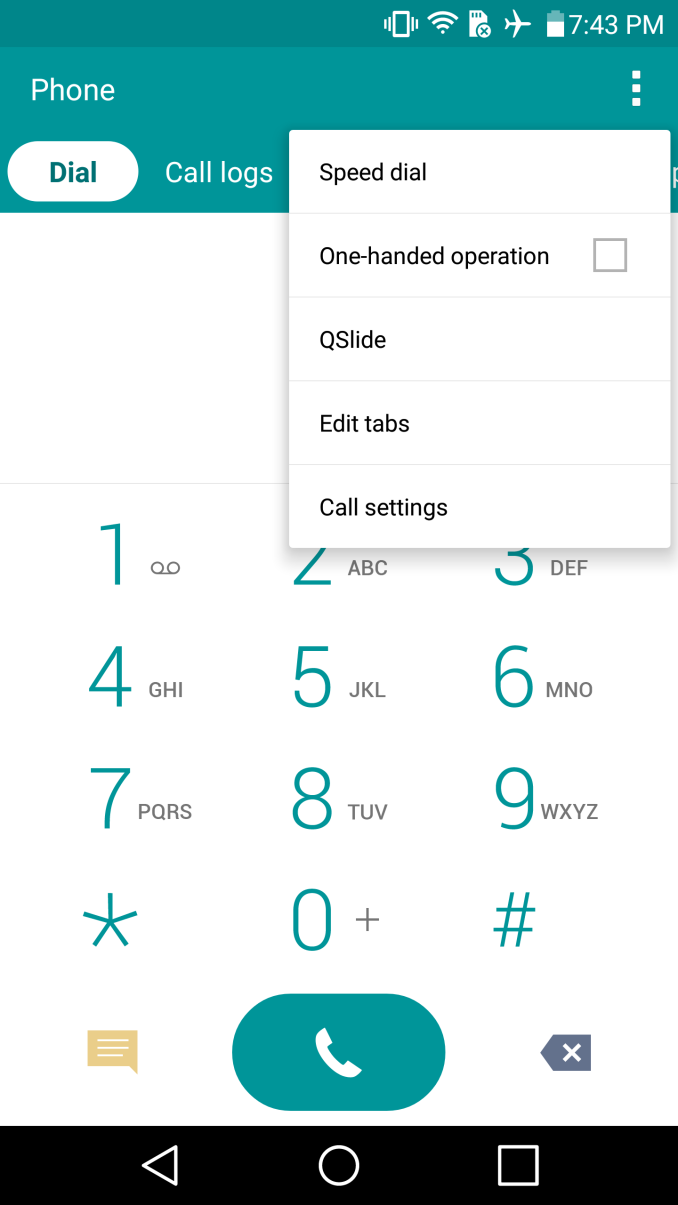
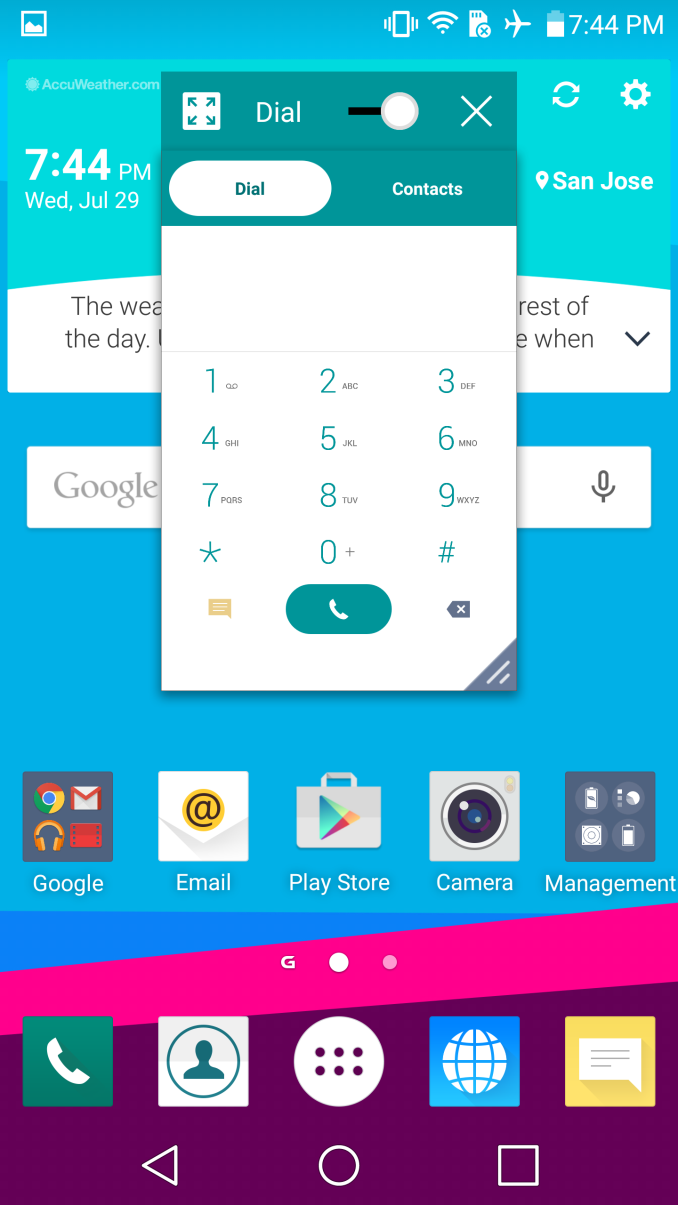








84 Comments
View All Comments
sonny73n - Friday, July 31, 2015 - link
Until this day, I still have no idea why they keep designing phones with display off-centered, speaker on the back, protruding camera and overkill display resolution. And these retarded engineers/designers are getting paid in millions. I know my opinion never matter but there one thing I can do is never to spend my money on any phone with any of the defects above. Let these arrogant idiots die out and hopefully someone else with common sense to take their place.Politic at work place is bad, LG. Keep having those retards design products for you and you'll lose more than just profit. 60% profit loss last time you say?
sonny73n - Friday, July 31, 2015 - link
Let me clarifyThe company reported a net profit of 226.4 billion won ($195 million) for the April-June quarter, compared with 411.8 billion won a year earlier. A FactSet survey of analysts forecast 204.8 billion won profit.
Sales fell 8 percent to 13.9 trillion won and operating income declined 60 percent to 244 billion won.
Maxpower2727 - Friday, July 31, 2015 - link
I assure you that their engineers and designers are not making millions of dollars.phoneasDAP - Friday, July 31, 2015 - link
I don't understand why websites don't evaluate headphone out quality. I don't think any site does.bug77 - Saturday, August 1, 2015 - link
gsmarena.com always does.Kildras - Friday, July 31, 2015 - link
I don't know how you call that camera performance equal /worse than Iphone 6plus.the day time photo is way sharper in both g4 and s6 while the iphone 6plus is filled by muddy details, just view the image in full resolution and tell me they are not far superior?
The difference is even bigger in night time photos, there is just no competition at all where iphone 6plus pretty much fail to capture to details and at least the g4 has some "leaves" shapes.
hari s - Saturday, August 1, 2015 - link
Not a good one at allhari s - Saturday, August 1, 2015 - link
I bought the lg G4 on july 1.on 29 july morning i couldnt switch the phone on.immediately i took it to the nearest lg service centre .they said it was problem with the mother board.may b my bad luck but is it affordable.after spending 50000 rs i didnt use the phone even for one month.boe - Monday, August 3, 2015 - link
The only benchmark I looked for was talk time as I use my phone everyday for my work phone where I give computer support. I didn't see a talk time benchmark - preferably with BT.ileben - Tuesday, August 4, 2015 - link
You guys should really start posting graphs of fps over time for a 20 minute run, so that we can get a good idea of performance degradation. Also the performance degradation chart values should be expressed as a ratio of [final run] / [cold run], otherwise it's pointless.